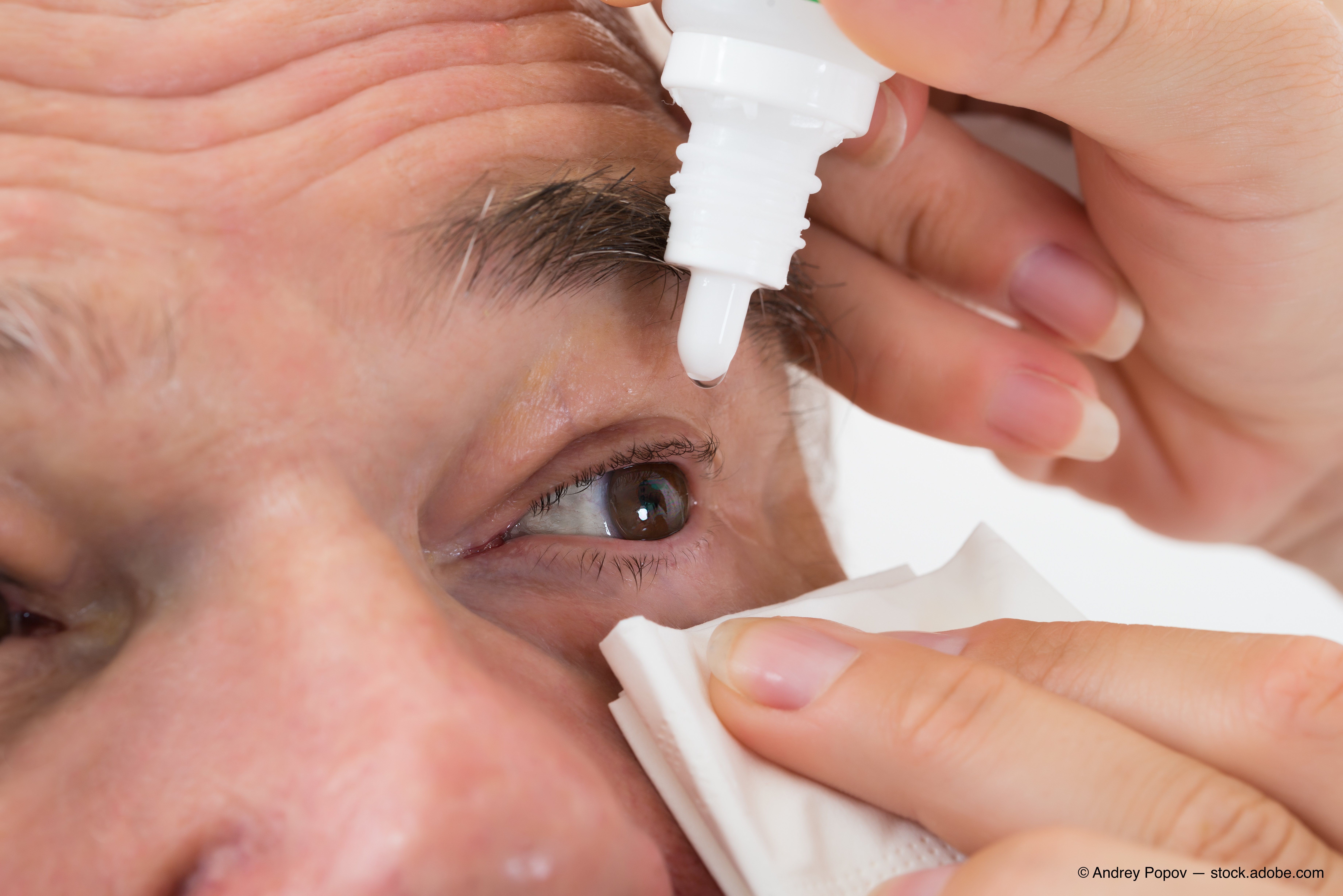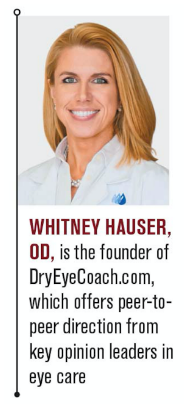Blog: Why dry eye?


One of the questions I’m most commonly ask is “Why dry eye?”-why is dry eye the condition to which you chose to dedicate your career?
My counter to that question is, “Why not dry eye?”
Actually, that’s my counter to the question now. In the beginning, however, I was asking myself the same thing.
I worked in cataract and refractive surgery for 10 years before jumping into dry eye with both feet. To be honest (and I hate this phrase), surgical eye care was “sexier” than dry eye. Patients went from 20/terrible to 20/elated almost immediately after both cataract and refractive surgery. Almost instant gratification. The doctors were all heroes. What’s not to love about that?
Dry eye, on the other hand, was like treading water in the ocean far from shore: fatiguing and no rescue boats in sight for either doctor or patient. All was lost.
Related: Blog: Don't leave dry eye disease patients high and dry
When I was tasked to create a dry eye center alongside my friend and colleague, Alan Kabat, OD, FAAO, I nearly said no to the invitation. I loved a challenge, and I admired Al, but this sounded like more than I cared to take on. Dry eye doctors were not heroes to their patients- they were zeroes. The patients were never satisfied and always finding a new complaint that I may, or may not, be able to identify clinically. I envisioned frustration for all involved.
Eventually, my competitive nature got the best of me, as it often does, and I agreed to collaborate in the creation of a “dry eye center of excellence.” From the moment we started, I loved it.
I’m a problem solver. It’s what I like to do, and dry eye disease (DED) presents all sorts of problems that need to be solved.
The most obvious-and first to tackle-is how to best treat the patient.
Related: How to recognize and manage digital eye strain
1. How do we engage the patient?
We made patient education a primary objective in our dry eye center. Many practitioners think that leads to inefficiency and wasted time. Nothing could be further from the truth. A well-educated patient will often ask fewer and more pointed questions.
The patient who doesn’t “get it” will pull out the dreaded list of questions and keep you for 20 minutes. At the end of the examination, the patients in our dry eye center often say my favorite words: “You just told me things no one else has ever said. I finally understand my dry eye.” They also understand I do not have a magic wand and can not necessarily fix it, but they are now willing to partner with me.
Education needn’t be just in the hands of the eyecare provider. The greatest successes in dry eye are shared by the entire team who cares for the patient. Dry eye patients can require a bit more attention than other patients. Utilizing staff to work with the patient can provide balance and not encumber a single staff member.
Related: How I built a customer service-centered practice
2. What is our SOP?
I love a good standard operating procedure (SOP). The first thing I did with the dry eye center was create a front-to-back plan about how we would engage dry eye patients from the front desk until the end of their exams.
One could label this a “protocol,” but it wasn’t just about the order of diagnostic testing and treatment recommendations. It was more about how the staff communicated with patients, how the staff communicated with each other, and how they handed the patient off.
Related: Revamp your patient handoff
The devil is in the details. The details are how you create a better conversion rate for premium procedures that, ultimately, lead to higher conversion rate. Refractive surgeons often speak in terms of conversions (how many patients a procedure was recommended to versus the uptake number). Some could argue that it is calculating, or even callus, to consider patient care in that light.
However, analytics rather than anecdotes are what create thriving businesses. Often the practices I consult with have “a feeling” about their conversion rate but no true statistics to hang their hat on. Tracking uptake helps practices identify trends, refine their messages and focus advertising dollars more wisely.
Related: Blog: Modern-day techniques for diagnosing dry eye disease
3. What do we invest in?
Equipment acquisition is the first thing ODs want to do. Quite frankly, buying equipment is easy. Utilizing it is the hard part. Consider not just the capital and disposable cost of equipment, but also who is going to use it, where it will live, and how long it takes to perform. Buying equipment takes no thought-only money-and sometimes money is easier to come by than brains. Consider how hands-on you do (or do not) want to be with treatments. Many options available have research supportive of their claims and can provide good outcomes for patients, but the piece of equipment has to work well in your office or it doesn’t “work.”
4. How do we retain patients?dry eye patients like to bounce. Their churn rate can be high because, some would argue, they are always chasing a “cure.” The truth is they are always chasing an ally. They do not want an OD who ignores their needs or one who blows smoke; They want the straight scoop and reasonable expectations to be set. Patient retention comes through adequate (if not exceptional) education.
One should also consider another bitter pill of dry eye patients. When a patient leaves your practice, odds are she is taking other family members along for the ride.
So, why dry eye? I can now say I feel how those cataract cowboys feel. I have the opportunity to bring patients back from the brink and improve their quality of life tremendously. They make me feel like a hero.
Read more dry eye content here
Newsletter
Want more insights like this? Subscribe to Optometry Times and get clinical pearls and practice tips delivered straight to your inbox.